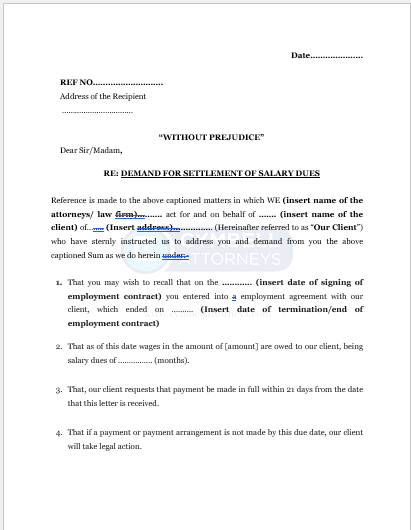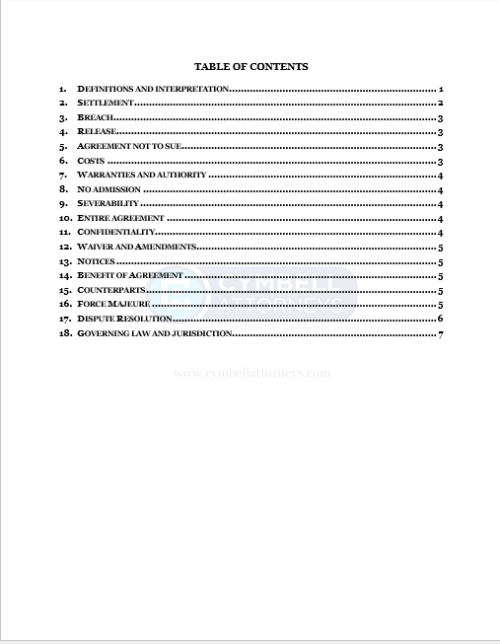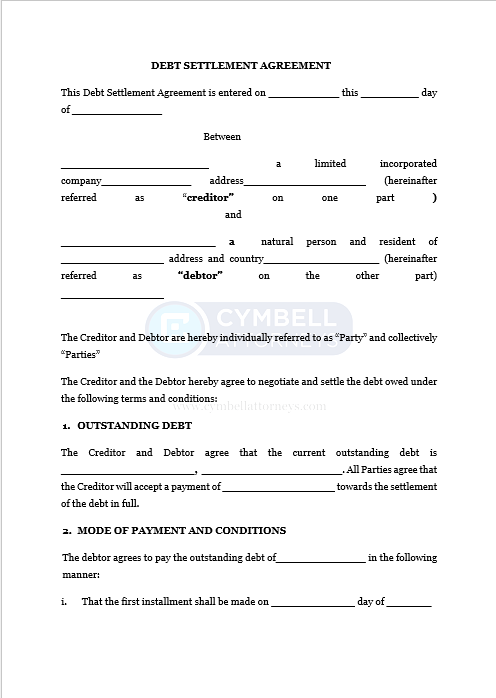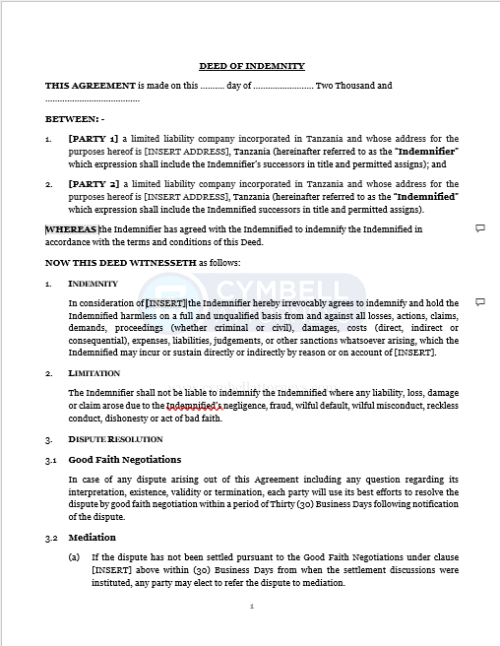- This precedent is intended to act as a guide in drafting Demand Notice for payment and settlement of employee’s salary dues following the failure of the employee to pay the contractual amounts.
- It can be modified and amended
-
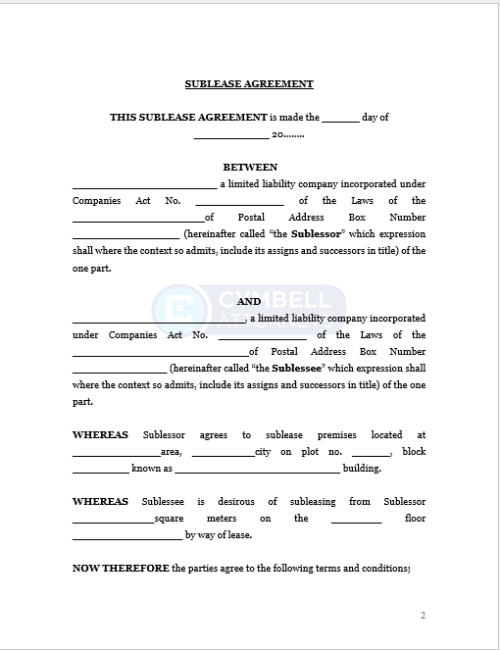 Notes:
Notes:- This precedent is intended to act as a guide in drafting Sample Demand Notice claiming for payment of rental areas for residential houses. Landlord to tenant demand notice for payment of outstanding arrears.
- It can be modified and amended from time to time depending on the nature of the tenancy agreement and the outstanding amounts
-
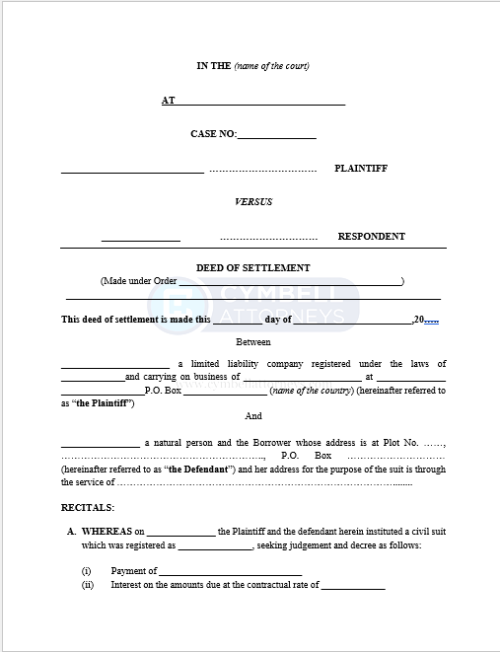 Notes:
Notes:- This precedent is intended to act as a guide in drafting Settlement deed between the parties for the payment of money due and payable to the plaintiff after instituting a case in court. The defendants agree that will pay the plaintiff the demanded amount as pleaded.
- The Settlement Deed is always filed in court readily to be adopted and endorsed as a court decree.
- It can be modified and amended from time to time depending on the terms and conditions and nature and demands of the parties.
-
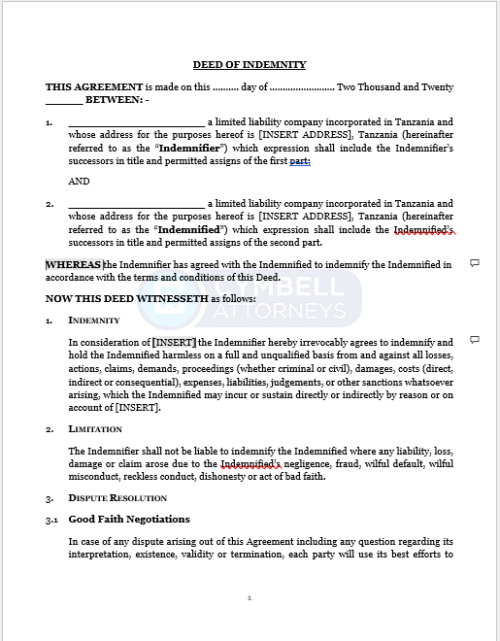 Notes: A Deed of Assignment of Trademark is a document through which the registered proprietor of a trademark transfers his/her/its rights, title and interest in the trademark to a third party. This gives the third party the right to use the trademark of the owner. Once the Deed of Assignment is done it is required to be registered with the Registrar of Trademarks. The difference between an assignment and a trademark is that a license allows the licensor to retain their rights and interests in their IP while an assignment transfer all of the assignor’s rights and interest to the assignee. This Deed is applicable in the following scenarios:
Notes: A Deed of Assignment of Trademark is a document through which the registered proprietor of a trademark transfers his/her/its rights, title and interest in the trademark to a third party. This gives the third party the right to use the trademark of the owner. Once the Deed of Assignment is done it is required to be registered with the Registrar of Trademarks. The difference between an assignment and a trademark is that a license allows the licensor to retain their rights and interests in their IP while an assignment transfer all of the assignor’s rights and interest to the assignee. This Deed is applicable in the following scenarios:- where the assignment is absolute; and
- where the goodwill of the business is being assigned.
-
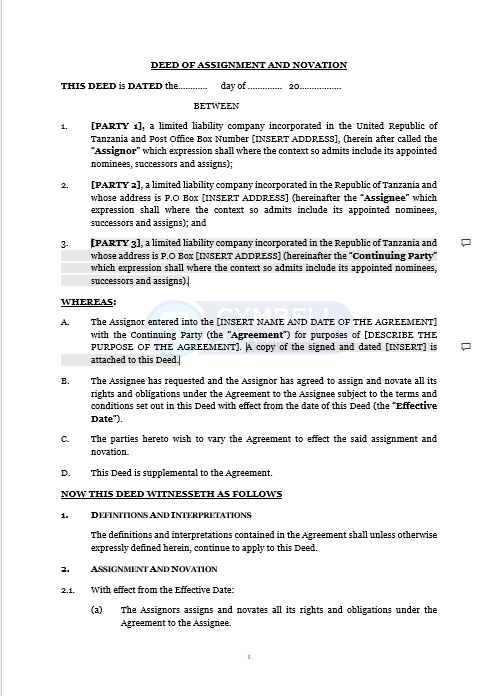 Notes: A Deed of Assignment of Trademark is a document through which the registered proprietor of a trademark transfers his/her/its rights, title and interest in the trademark to a third party. This gives the third party the right to use the trademark of the owner. Once the Deed of Assignment is done it is required to be registered with the Registrar of Trademarks. The difference between an assignment and a trademark is that a license allows the licensor to retain their rights and interests in their IP while an assignment transfer all of the assignor’s rights and interest to the assignee. This Deed is applicable in the following scenarios:
Notes: A Deed of Assignment of Trademark is a document through which the registered proprietor of a trademark transfers his/her/its rights, title and interest in the trademark to a third party. This gives the third party the right to use the trademark of the owner. Once the Deed of Assignment is done it is required to be registered with the Registrar of Trademarks. The difference between an assignment and a trademark is that a license allows the licensor to retain their rights and interests in their IP while an assignment transfer all of the assignor’s rights and interest to the assignee. This Deed is applicable in the following scenarios:- where the assignment is absolute; and
- where the goodwill of the business is being assigned.
-
 Notes: A Deed of Assignment of Trademark is a document through which the registered proprietor of a trademark transfers his/her/its rights, title and interest in the trademark to a third party. This gives the third party the right to use the trademark of the owner. Once the Deed of Assignment is done it is required to be registered with the Registrar of Trademarks. The difference between an assignment and a trademark is that a license allows the licensor to retain their rights and interests in their IP while an assignment transfer all of the assignor’s rights and interest to the assignee. This Deed is applicable in the following scenarios:
Notes: A Deed of Assignment of Trademark is a document through which the registered proprietor of a trademark transfers his/her/its rights, title and interest in the trademark to a third party. This gives the third party the right to use the trademark of the owner. Once the Deed of Assignment is done it is required to be registered with the Registrar of Trademarks. The difference between an assignment and a trademark is that a license allows the licensor to retain their rights and interests in their IP while an assignment transfer all of the assignor’s rights and interest to the assignee. This Deed is applicable in the following scenarios:- where the assignment is absolute; and
- where the goodwill of the business is being assigned.

